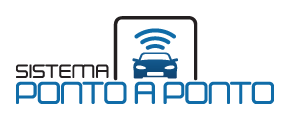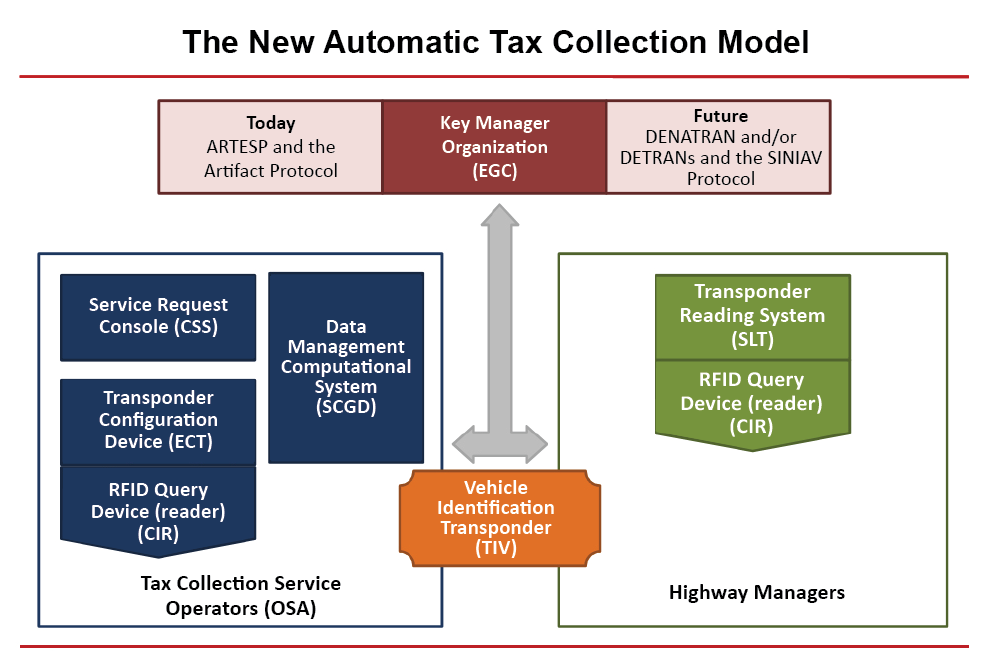


The Point-to-Point System is a project of the Sao Paulo State Government. It is a new way of toll collection used on state highways, made electronically and based on the right distance traveled.
The project includes installation of fixed portals strategically defined along the highways. These portals have antennas and readers operating in the same frequency and protocol of the tags fixed on each vehicle by Authorized Carriers to operate in the State of Sao Paulo.
Every time a vehicle pass through one of these portals, the readers detect the tag and the right amount is automatically charged from that user’s credits.
In 2012, an experimental portal were installed on the highways Rodovia Engenheiro Constâncio Cintra (SP-360) and Rodovia Santos Dumont (SP-75). In 2013 the highway Rodovia Governador Adhemar Pereira de Barros (SP-340) received the first open Point-to-Point system for any vehicle which travel along it. In 2014, the highway Rodovia Professor Zeferino Vaz (SP-332) received the forth Point-to-Point of the state.

Given the DENATRAN Resolution No. 227, from March 30th 2010, which implements the use of the AVI protocol, determining that all reading devices must be interoperable for processing the information from the vehicles. We inform that our confidentiality terms are available for download. The SINIAV standard was stablished by CONATRAN resolution No. 412, from August 2012, according to the Complementary Law No. 121, from February 2006.
The system will cover all vehicles in circulation, and allow connectivity of the information contained in the tag installed between the various public and private agencies. The main objectives of the SINIAV Project are:
A) Traffic Management
After a technical cooperation agreement signed on August 31, 2009 between the Ministry of Science and Technology, the Federal Revenue and the Department of Finances of each state, the Identification, Tracking and Authentication of Goods and Cargo, named as "Brasil-ID".
This system is based on the use of Radio Frequency Identification (RFID), and other auxiliary integrated accessories to perform the identification, tracking and authentication of goods production and circulation throughout the country, under a single standard. The project is coordinated by the Center for Advanced Research Wernher von Braun together with the ENCAT.
Develop and deploy a technology infrastructure of hardware and software to ensure the identification, tracking and authentication of goods produced and in circulation in Brazil, with the use of RFID chips, aiming to standardize, unify, interact, integrate, simplify, reduce bureaucracy and speed up production process, logistics and supervision of goods the country.
Rationalize and simplify, under government scope, audit procedures and inspection of taxes, goods and services;
Providing, under companies scope, significant cost savings and improvements in production processes, storage, distribution and logistics;
Providing, under government scope, greater control over the manufacture, sale, movement of goods and services, in order to reduce significantly tax evasion, smuggling, embezzlement, forgery and theft of goods in the country, favoring therefore to a fair competitive environment;
Create a Brasil-ID national management system (Back Office) that interact and integrate with government systems and businesses that may require or provide own resources;
Specify, analyze, design, scale and develop basic national and centralized data management and Brazil-ID transactions to be managed by the government software through an entity designated for such;
Develop systems integration solutions (middleware) that will allow incorporating, automatically, the various information systems that will interact with the Brazil-ID systems, for example, the communication interface with the systems of the Electronic Invoice. Additionally, the middleware also supports standardized communication for integration of all RFID readers and associated communication systems that will be distributed throughout the country;
Specify, design and deploy technology infrastructure for the Departments of Treasury and Internal Revenue Service for integration with Brazil-ID;
Specify, design and develop specialized software for the integration, management and data generation and smart controls to ensure a swift and effective supervision in tax offices, steering wheels controls and audits in companies from the interactions occurring between the structural systems of States and Brazil -ID;
Regulatory framework for nationwide use of RFID technology, to meet the demands of the government and business sector;
Develop information systems with web interface with different permission levels to ensure access restricted to different types of information;
Acquire, develop and implement the entire technological infrastructure, to full implementation of the Brasil-ID, including servers, readers of RFID tags, sensors and actuators to the tax offices, among others.